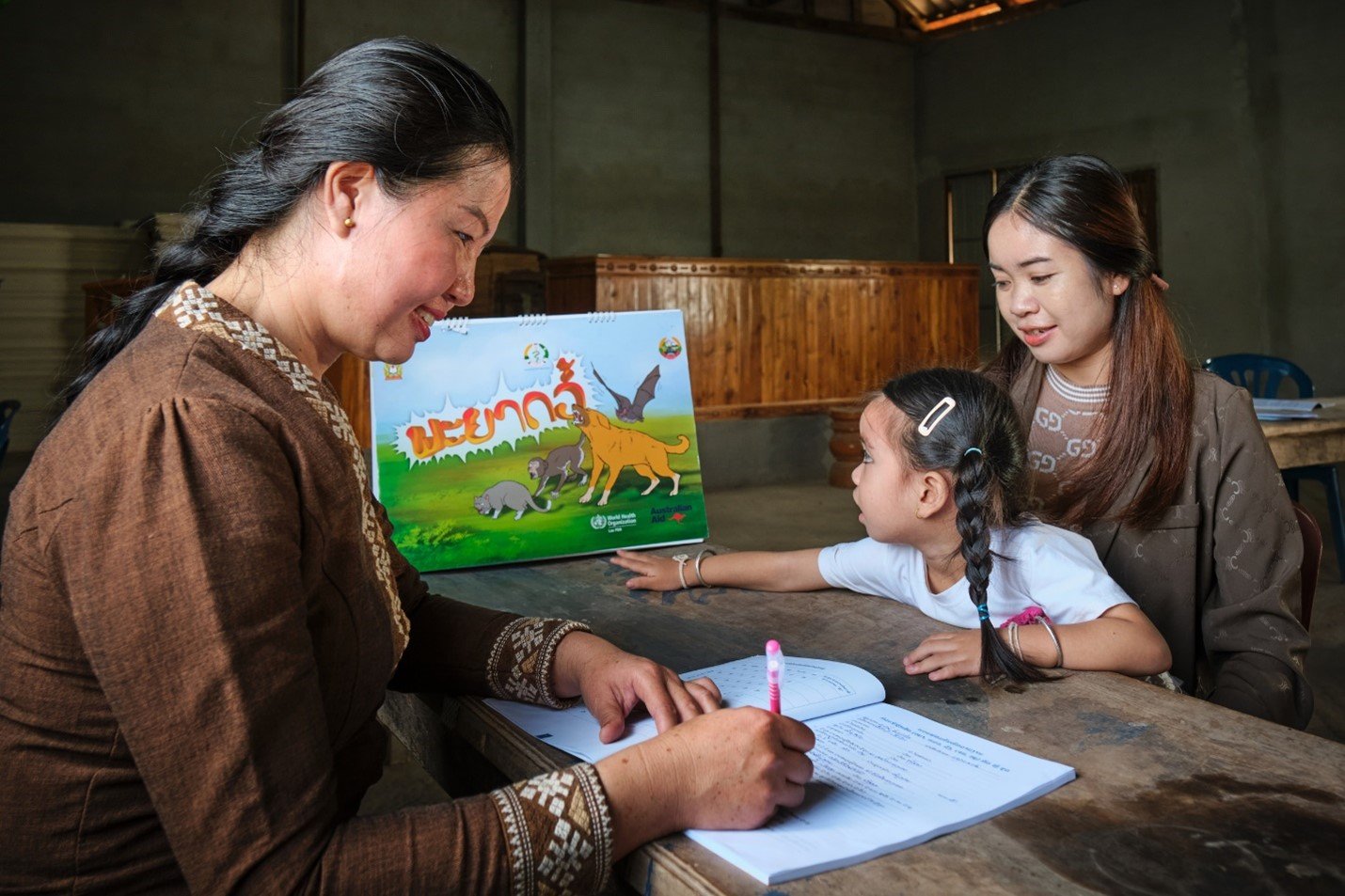
Rabies, a preventable yet fatal zoonotic disease, has been a longstanding public health risk in Lao PDR. For many years the country has faced cases, with children disproportionately affected.
“About four or five years ago, [a boy] was playing in his yard when a dog walked by and bit him,” said Mrs Sonesopha, Deputy Chief of Napoung Village. “Sadly, he passed away, he was only 12 years old then, just in his first year of secondary school.”
Globally there are an estimated 59 000 deaths from rabies each year, but this is thought to be significantly below the real number.
In Lao PDR, major barriers to effective rabies control have been the limited access to post-exposure rabies vaccination, a lack of understanding about the disease, and more critically, the lack of a reliable and comprehensive data. This limits the ability to accurately assess the location and severity of rabies, respond accordingly, and save lives.
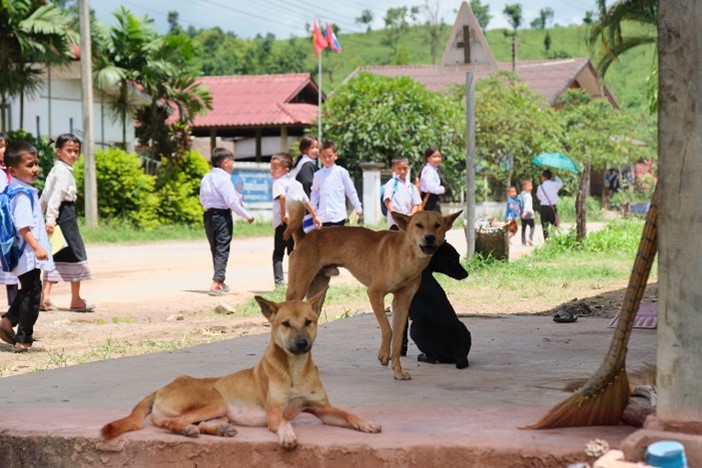
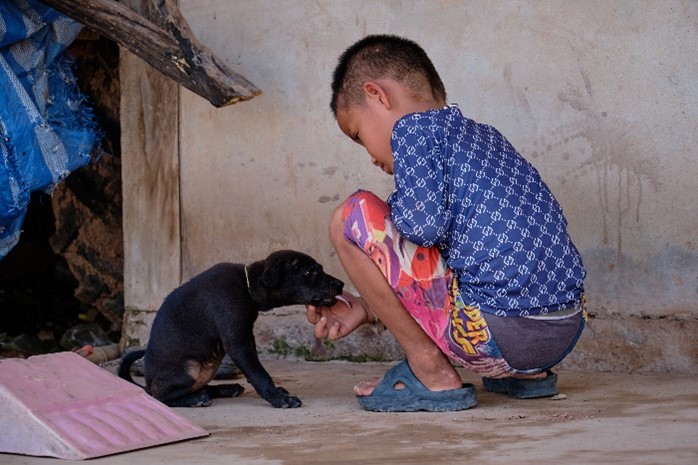
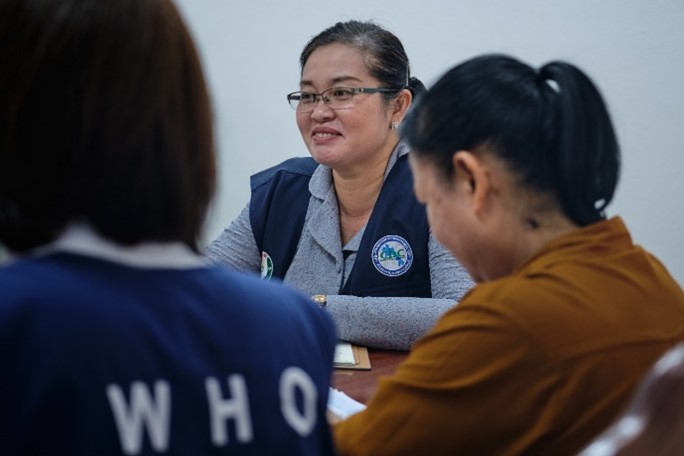

“Animal bites are more likely to happen close to homes and children are often the victims,” said Dr Kaysone Syda, Director of Xayaboury Provincial Health Department. “Since there was no reporting system in place at the community level, we do not know exactly if every animal bite case is reported or if they received rabies vaccine afterwards.”
Rabies deaths are preventable with rapid post-exposure rabies vaccination, preventing the virus from reaching the central nervous system – however – this requires fast access to the vaccine, and the vaccine being available when needed.
To address this rabies data gap, a WHO Lao PDR and Ministry of Health pilot project, with support from the Australian Government, was launched in Xayaboury Province – a location with a number of reported rabies cases. The project aimed to establish a rabies reporting system from the community level, essential for rabies detection and prevention.
A core part of the pilot project is the development and implementation of standardized village-level reporting. This involved setting up a clear reporting system, producing logbooks to capture data, and providing village authorities, village health volunteers (VHVs), and healthcare workers with a structured framework for reporting animal bites and suspected rabies cases.


“To ensure effective implementation, comprehensive training programmes were conducted to equip village authorities, VHVs, and healthcare workers with the knowledge necessary for rabies reporting and management,” said Thipphavanh Chanthapaseuth, WHO Lao PDR’s lead on neglected tropical diseases.
“These trainings covered rabies symptoms, prevention, and proper procedures for reporting and referring cases. Additionally, the project developed and distributed education materials to raise awareness among the general public.”
In total, more than 830 people, including health workers from 76 health facilities and authorities from 276 villages, were trained on rabies prevention and control. Moving forward, the plan is to expand this training to all villages in Xayaboury and Luang Namtha Provinces in 2025, ensuring that local authorities and health workers are equipped to prevent rabies.
“We now have a better understanding of rabies and the procedures for reporting cases,” shared Mrs Bounsom Singkeo, a village health volunteer from Thin Village. “In the past, we were just trying to do what seemed right, but now we know better how to respond [to animal bite cases].”

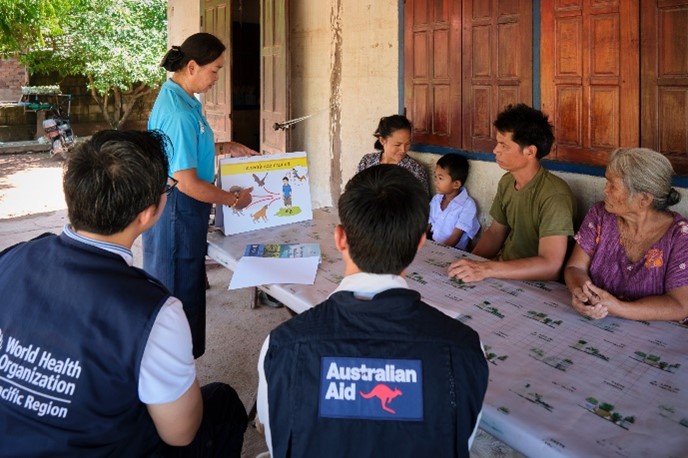


Positively, the pilot project has already achieved results. Early detection of animal bite cases has led to timely hospital referral and treatment, potentially saving lives. Additionally, increased knowledge of rabies prevention, symptoms, and appropriate actions has empowered individuals to take proactive steps to protect themselves and their families.
“Rabies control is a priority for the health and safety of communities. Through Australia’s partnership with the Ministry of Health and the WHO, we are committed to the reporting system to better track cases and prevent future cases,” said Benita Sommerville, Deputy Head of Mission, Australian Embassy in Laos.
“This project is a significant step forward,” said Dr Bouaphanh Khamphaphongphane, Director of the National Centre for Laboratory and Epidemiology. “But, additional data will help us fully understand the threat of rabies in Lao PDR.”

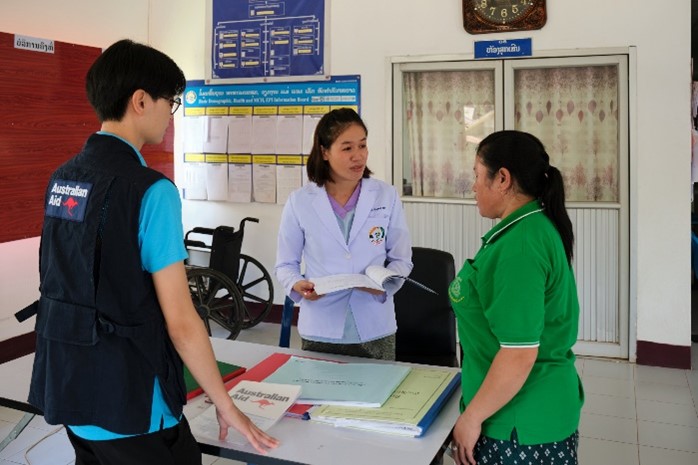

“By strengthening data collection and analysis capabilities, the country can more accurately assess the burden of rabies, identify high-risk areas, allocate resources effectively, and develop additional targeted interventions.”
The ultimate goal is to eliminate rabies in Lao PDR by 2030. By expanding the community-based rabies reporting system to other high-risk areas and implementing evidence-based interventions, including vaccine procurement and allocation, the country can make significant progress towards achieving this ambitious target.
